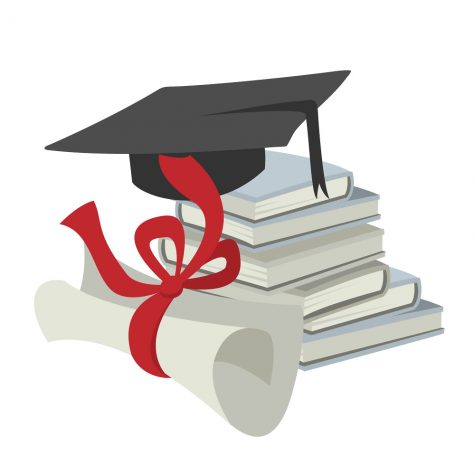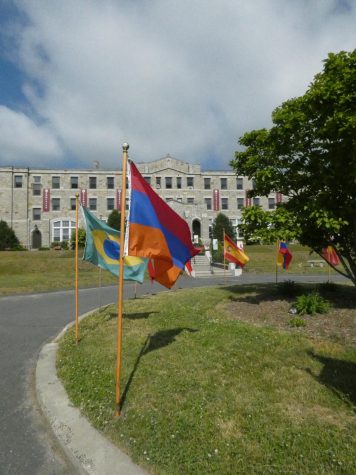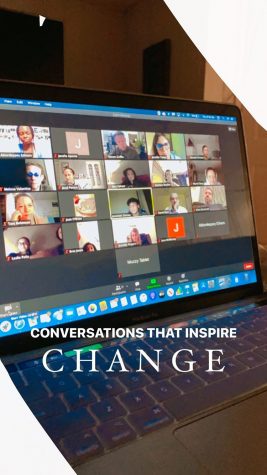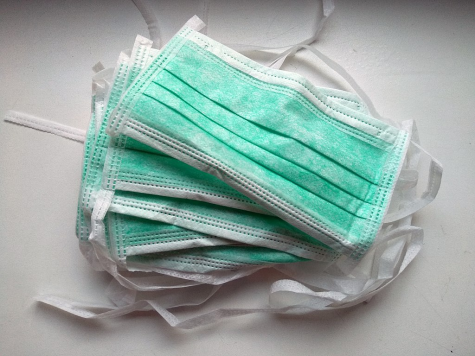The Truth of Thanksgiving
January 10, 2021
For many Americans, Thanksgiving typically involves mounds of food with friends and family. Traditionally, Thanksgiving is a day to reflect on what one is thankful for, as the name suggests. As for its origins, the typical story goes as follows:
The Pilgrims had embarked from England in 1620 to the Massachusetts Bay, where they established the Plymouth Colony. The Pilgrims faced many adversities in this new land; the egregious weather, the different geography, and their ‘new neighbors’ were a few of the new challenges these Pilgrims encountered. However, these ‘new neighbors’, or the people Indigenous to the land, helped the Pilgrims. The Pilgrims were able to reap a harvest, and thus, extended an invitation to the Indigenous people as a means of gratitude. It was a harmonious meal in which the two groups shared thanks for the harvest and their shared contributions to the meal.
This story is a sham. It’s true that this feast did occur, but the picture isn’t as pretty as it’s typically narrated to be.
The Wampanoag, the Indigenous people who had participated in Thanksgiving, had been subject to many adversities when Europeans first arrived on their shores in the 1500s. Disease had nearly wiped whole villages, governments that bore no resemblance to tribal practices and values were being enforced onto them, and missionaries with the intent of converting Indigenous peoples to Christianity transformed the daily lives of the Wampanoag.
It was out of necessity that Sachem Massasoit Ousamequin, the Great Chief of the Wampanoag, had reached out to the Pilgrims as an attempt to create an alliance. However, this never happened.
Frank James, an Aquinnah Wampanoag elder and Native American activist, says that the Indigenous peoples had been “stripped of [their] power, [and] could only stand by and watch while the white man [took their] land and [used] it for his personal gain. Time and time again in the white man’s society, we Indians have been termed ‘low man on the totem pole.’”
Although this speech was to be delivered in 1970, this sentiment still stands true. The U.S. Government has attempted to conceal the true origins and history of Thanksgiving and the slaughter, rape, marginilization, and forced displacement of Indigenous peoples nationally. This is evident in the way children are taught praises of Christopher Columbus or the harmful depictions of Indigenous people we are constantly bombarded with.
The federal government does very little to protect Indigenous peoples. Indigenous people are dying at a higher rate than other Americans in categories including chronic liver disease and cirrhosis, diabetes mellitus, unintentional injuries, assault/homicide, intentional self-harm/suicide, and chronic lower respiratory diseases according to the Indian Health Service.
According to the Indian Law Resource Center, “More than 4 in 5 American Indian and Alaska Native women have experienced violence, and more than 1 in 2 have experienced sexual violence.” Women on some reservations are murdered 10 times higher than the national average.
These are only a few examples of how Indigenous peoples are treated in today’s America.
Next Thanksgiving, acknowledge the holiday’s history and the continued horrific treatment of Indigenous people by the federal government. Kristina Stanley, a member of the I-collective, a group of Indigenous chefs and activists, spoke on her thoughts regarding Thanksgiving.
“There’s nothing wrong with celebrating family and gratitude. My hope is that people can do so while also learning about the holiday’s true origins. Seek out Native narratives,” Stanley says.
It’s necessary that we continue to listen to Indigenous voices and to educate ourselves.



